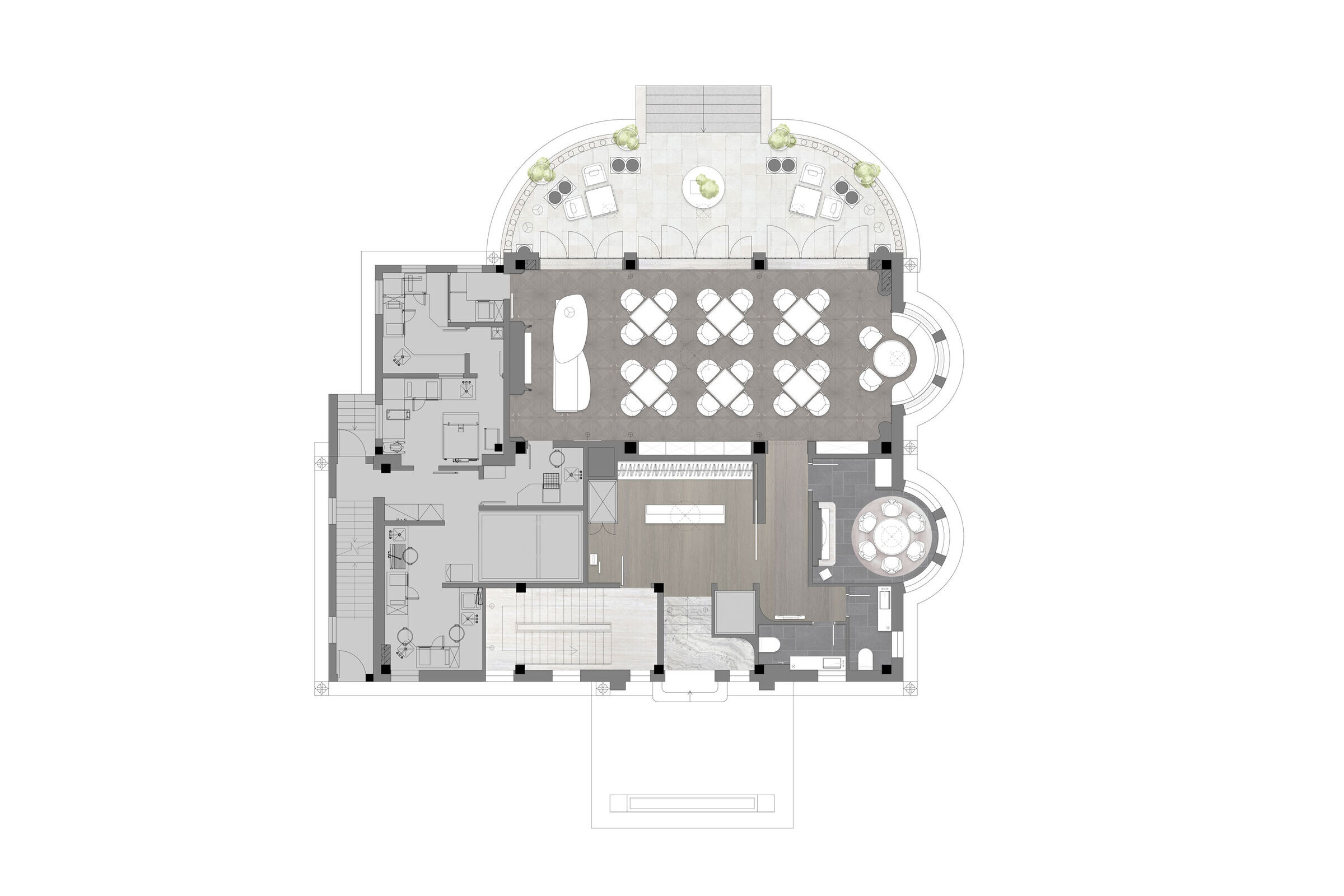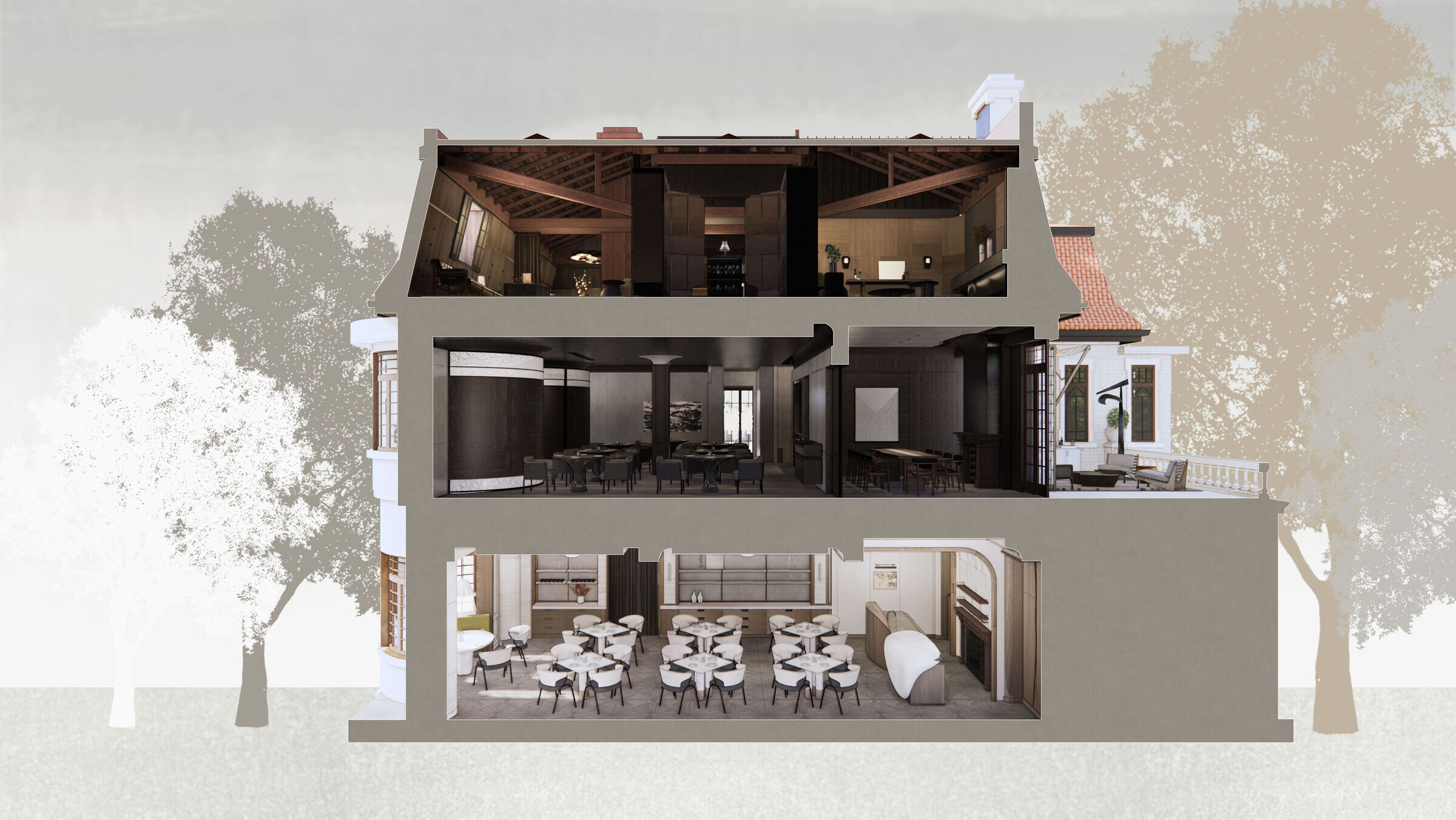EHB DESIGN INTENT
Every chef knows remarkable food is a result of the near impossible to explain, a richly nuanced experience that EHB chef Esben HolmboeBang knows better than most. In developing this project, we sought to emphasize this alchemy, China’s historical heritage of botanic medicine melding science and nature, as well as the unique culinary skill of such a distinct chef. Finding balance in the artistry of materials, EHB is a careful concoction of honoring the existingwhile expressing the contemporary.


Upon entering EHB,the references to nature, organic form, and botanicals are instantly apparent.Drawing from HolmboeBang's culinary philosophy, the first floor’s design pays homage to Norway, and the chef’s use of organic, biodynamic, and wild produce. Meanwhile, in Oslo, Norway where Chef HolmboeBang’s three-Michelin-starred restaurant Maaemo resides, ingredients are sourced from local forests; local flora and fauna are handpicked by dedicated floor and kitchen staff–giving new meaning to ‘farm to table’.
EHB exists inside a historical villa in Shanghai’s French Concession district, a culturally unique neighborhood and environmentknown for its architectural heritage. The surrounding consulates and grand residences provided a foundation for the restaurant’s initial design, as well as a continual source of inspiration. In the early 20th century, well-known Chinesedignitaries including the Soong family - V.T. Soong, and Soong Mei-Ling (Madame Chiang), called the villa home for some time.
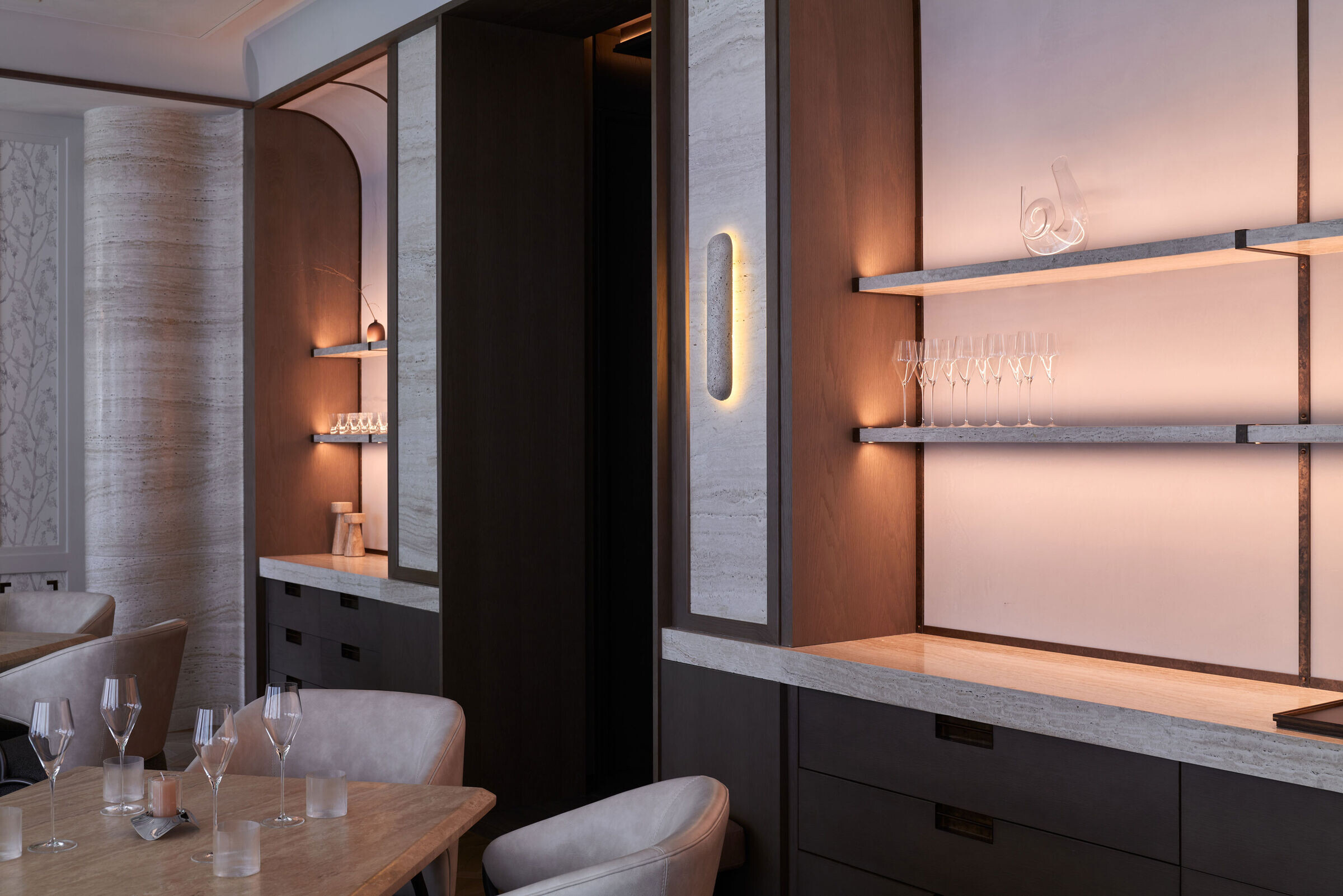
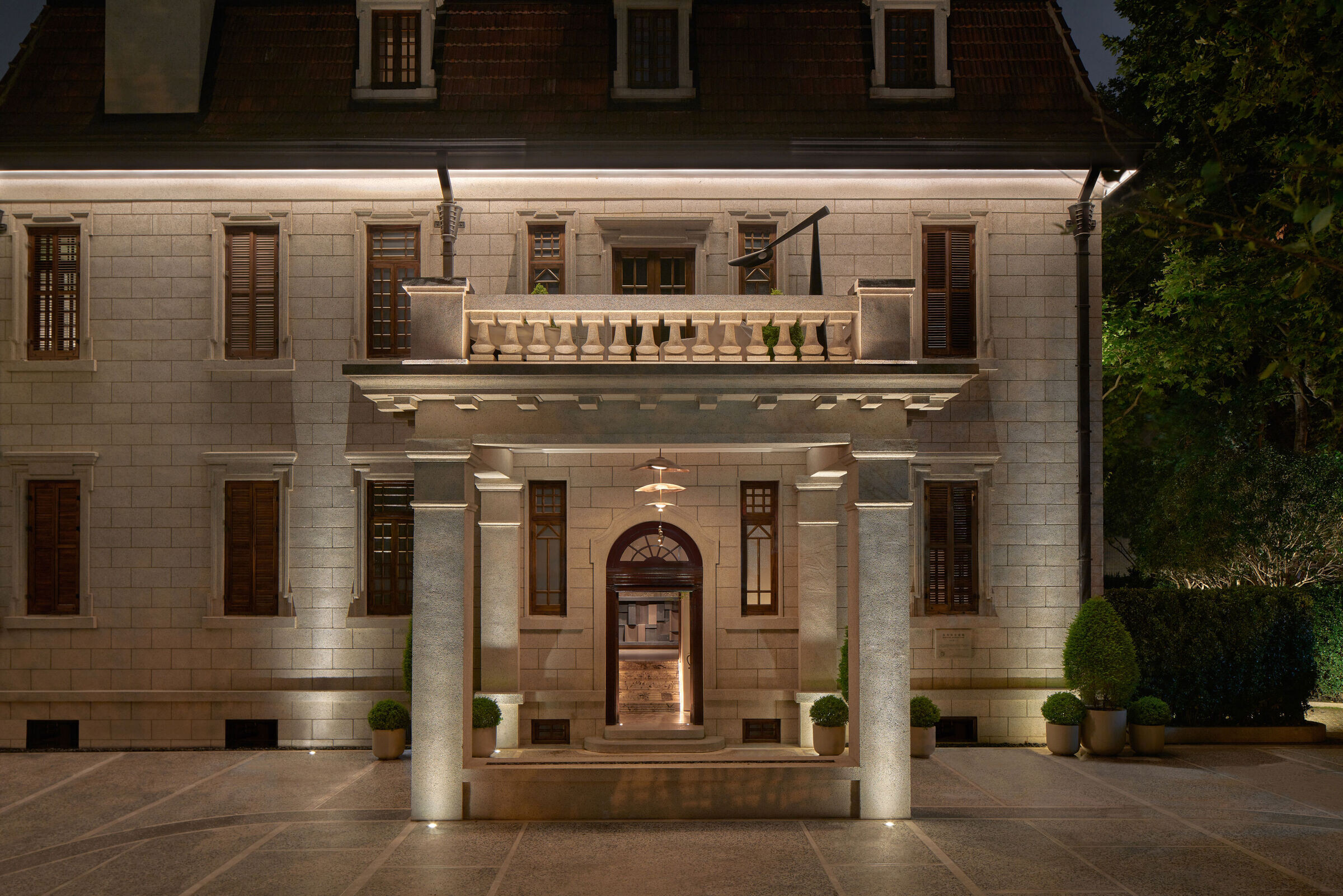
Guests are invited to experience luxury redefined, one where simplicity and natural elements are emphasized. EHB is an opulent experience in harmony with refined details–sleek wood, natural stones, raw-effect metals, and Venetian plaster finishes come together to create an effortlessly naturalistic environment. This space is an ongoing conversation between the organic, the subtle refinement of Norway, and China’s historical blending of science and nature.
In the Tearoom, the light and neutral palette allows the food and flavor to shine. Chinoiseriestyle wallcoverings paired with mortise-and-tenon details derived from Chinese tradition pay homage to both the existing architecture and the localvernacular.Classic western panelingand flooring showcasedetails that mimic the mortise-and-tenon joint found within Asian architecture, complementing the modern furnishings of Scandinavia. These details are usually hidden and constructed of wood, yet here, a usually enigmatic concept is celebrated and made palpable, inits final forma bronze metal.
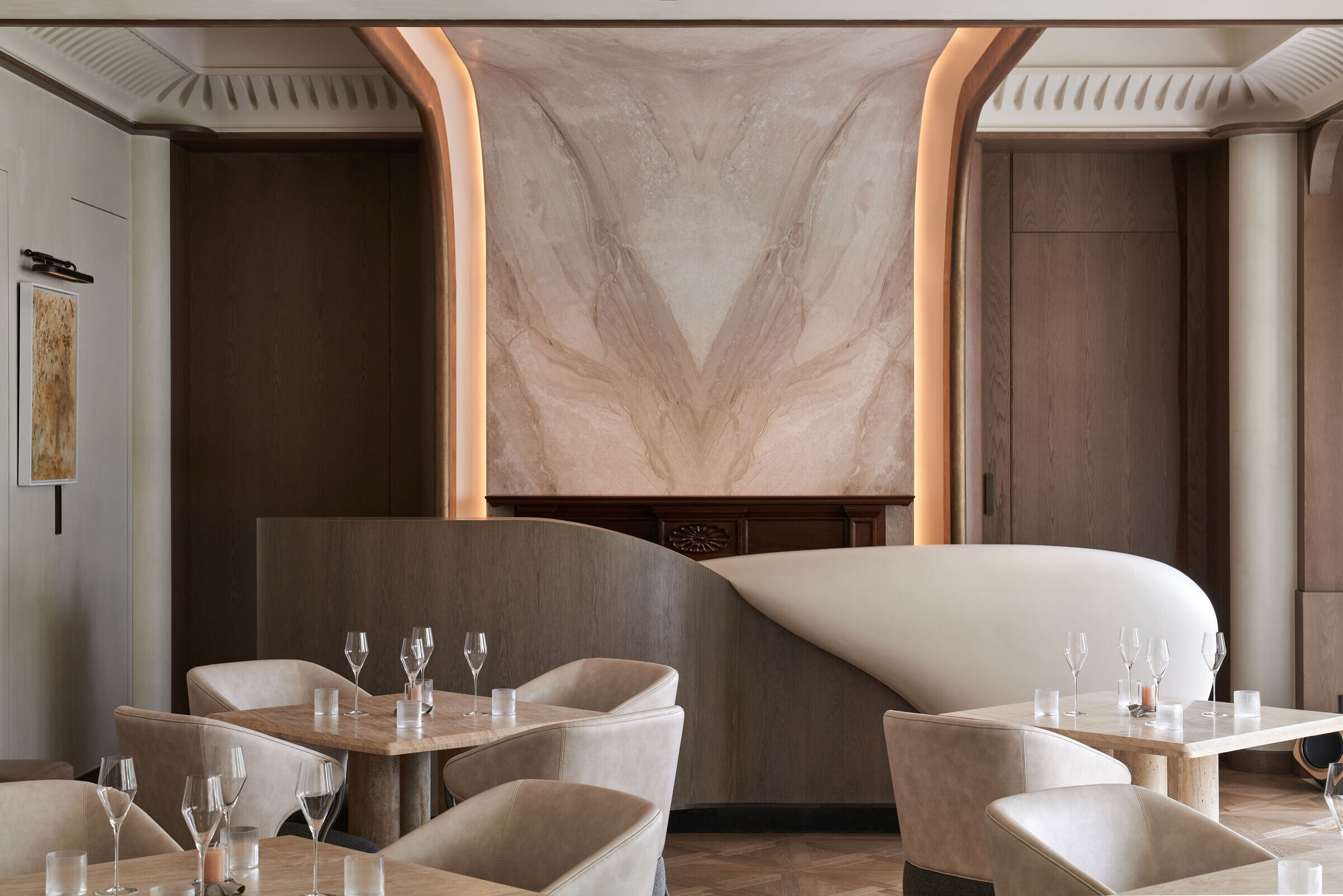
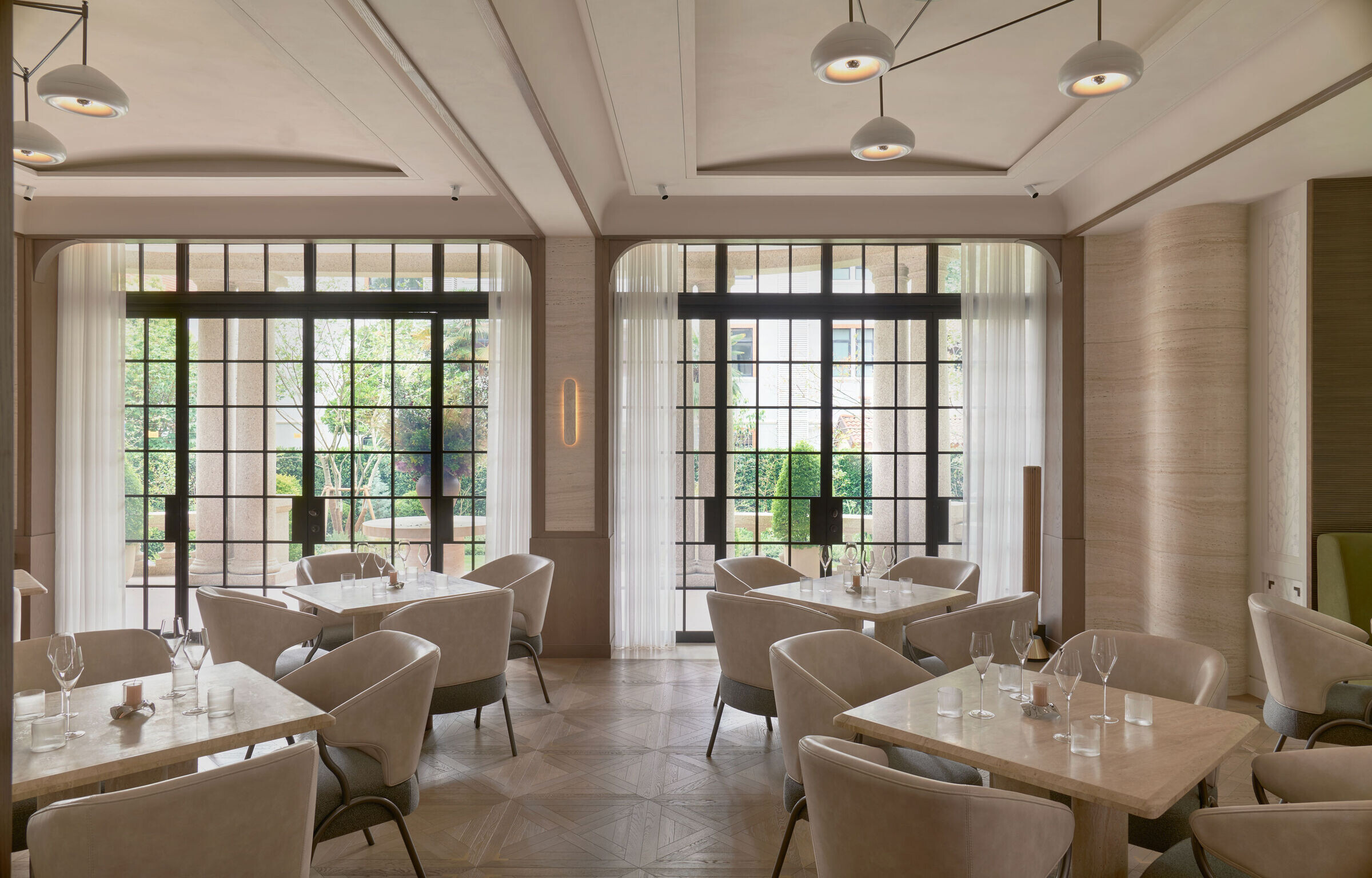
The essence of Norway is most apparent in the main dining and lounge floors, in homageto the cooking philosophy of HolmboeBang. The ground floor celebratestheproject’s Chinese and natural underpinnings, and its second and third floors use native Nordic design forms, materials, and colors, to honor the esteemed Chef's distinctive dining experience.
Whilst maintaining the integrity of the original architecture of the villa, a more minimal and modern approach has been taken towards the design of the secondfloor dining room. Dark, rich materials are applied to the interior architecture and furnishings, opting for a heavier atmosphere, where frivolous details could lack.
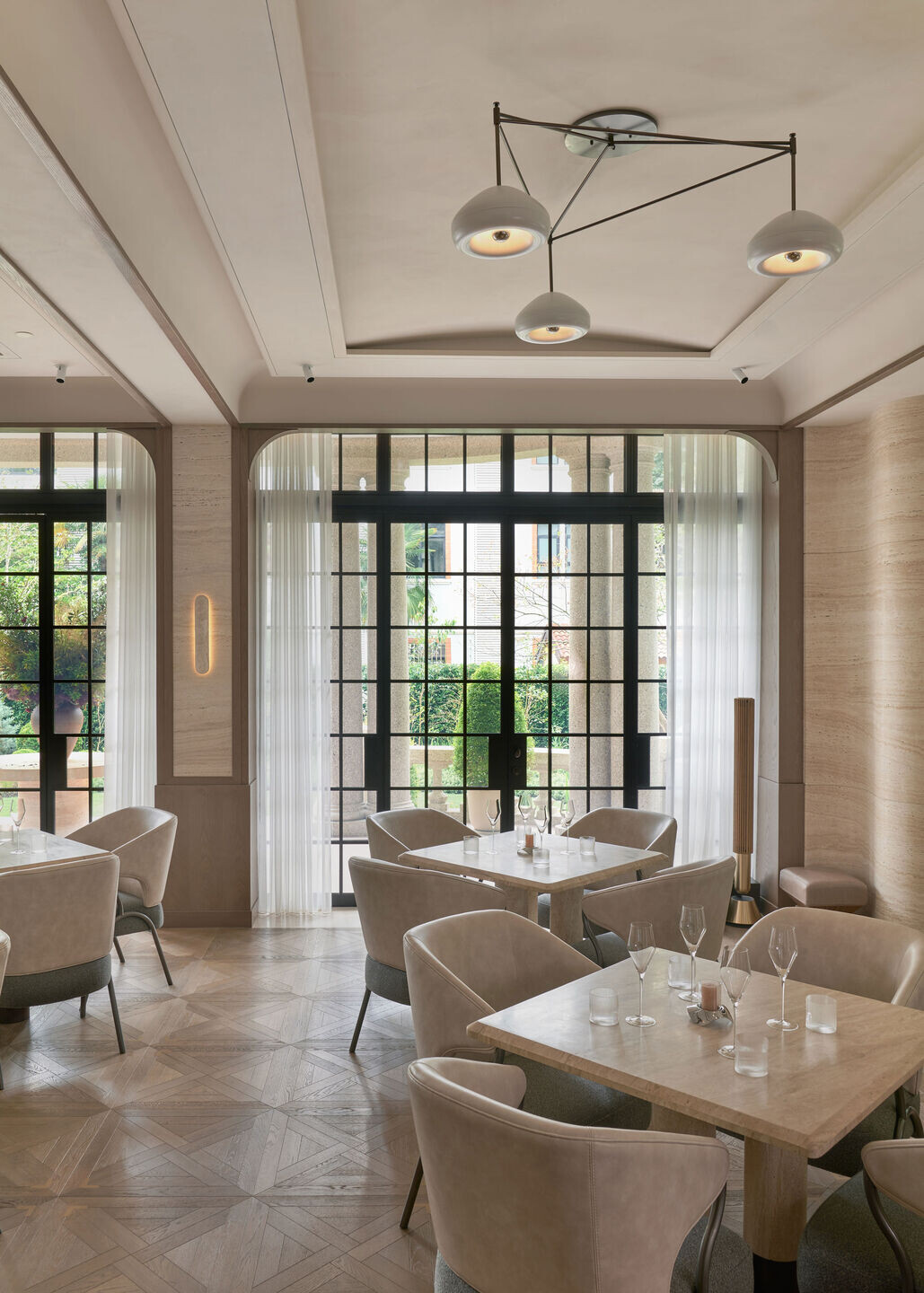
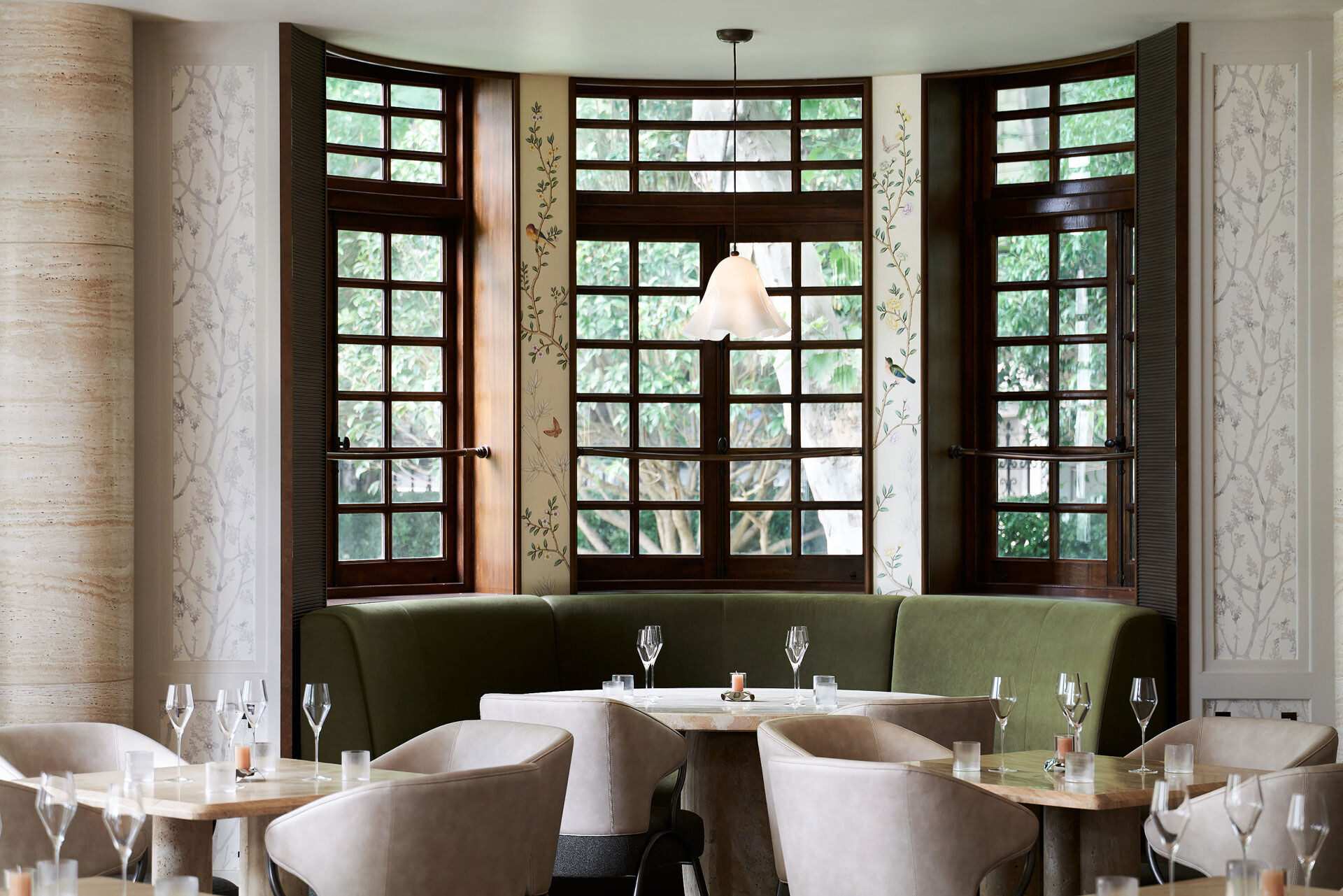
The third floor with living room is one of the more architecturally rich spaces. The dining experience engages each guest from start to finish, where the Chef invites diners to his ‘living room’ for pre- and post-dinner hospitality. The existing open ceiling with exposed trusses and beams of mortise-and-tenon construction, is quintessential to the overall atmosphere of the space. An original fireplace sets the stage of the lounge, where the furnishing and architectural finishes are in keeping with the surroundings, whilst maintaining an element of Scandinavian influence. So that the lounge could sustain a feeling of intimacy whilst ensuring programmatic function, the wine tasting room has been placed in a visually and physically central location. This placement creates semi-private nooks for groups of diners, while adding a sense of intrigue. Its glass sides allow for visual continuity and the wine itself becomes a design element. More notably, the paneled entrance has been designed to evoke the monumental and undulating nature of a Nordic Fjord.
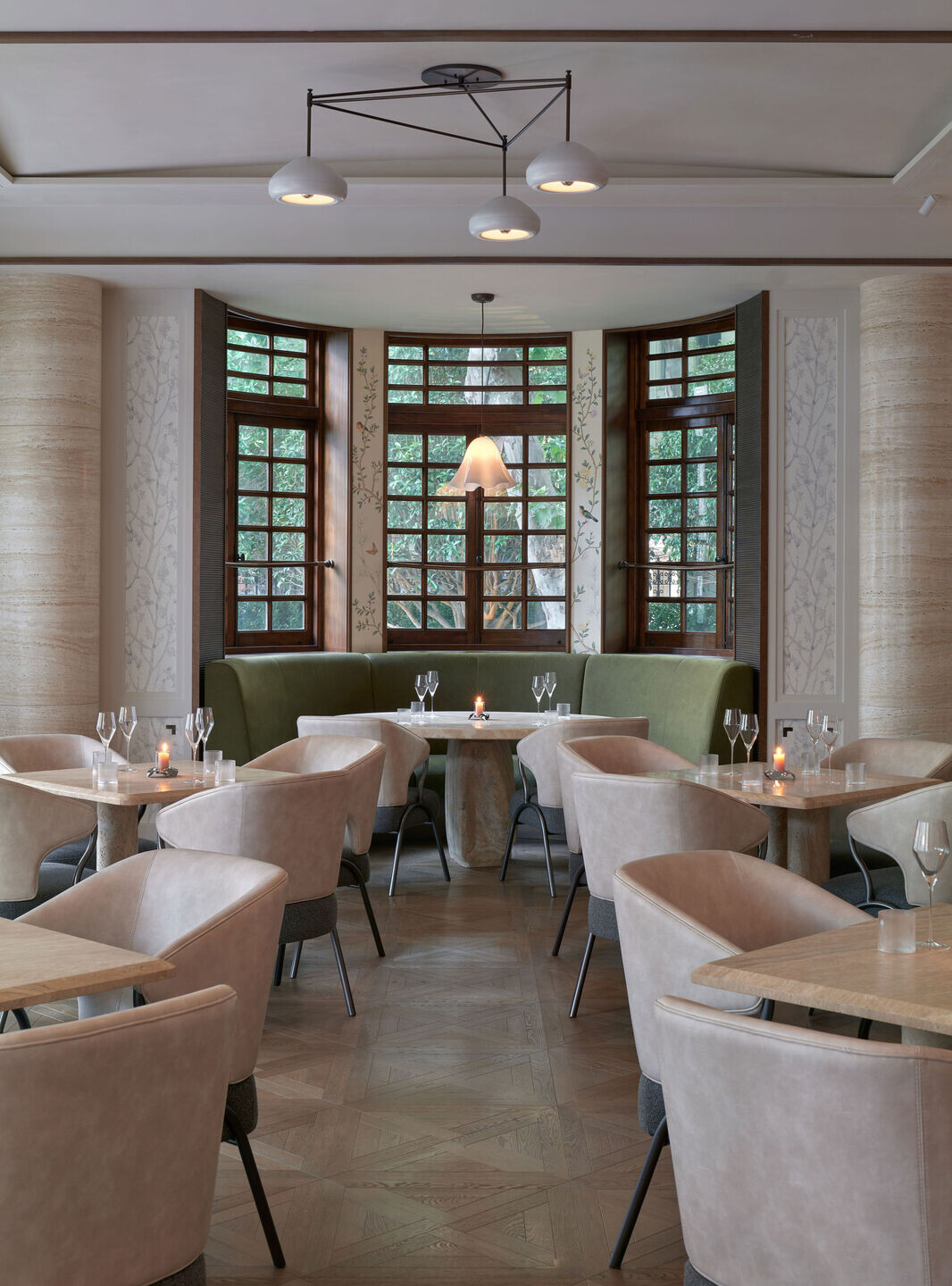
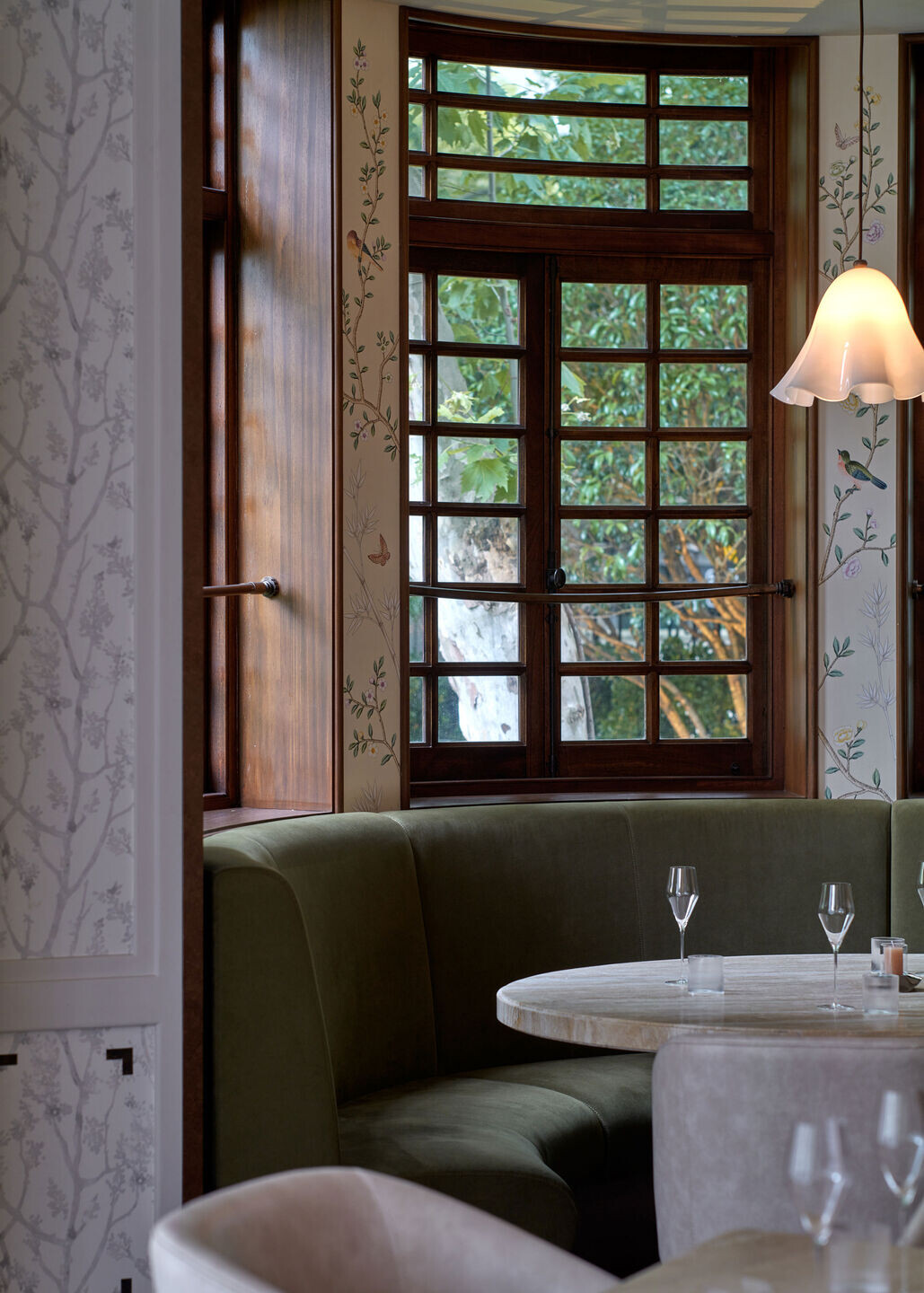
Team:
Principle designer: Chris Shao
Design team: Chris Shao Studio LLC
Lighting consultant: Isabel Zhu
Landscape: Fish Design
Artists: Natalia Landowska, Gil Melott, Sophie Lou Jacobsen, Pelle Designs (Jean & Oliver Pelle), Yves Mohy,
Other consultants: Morris, Jebara & Co.
Photographer: Zhu Hai
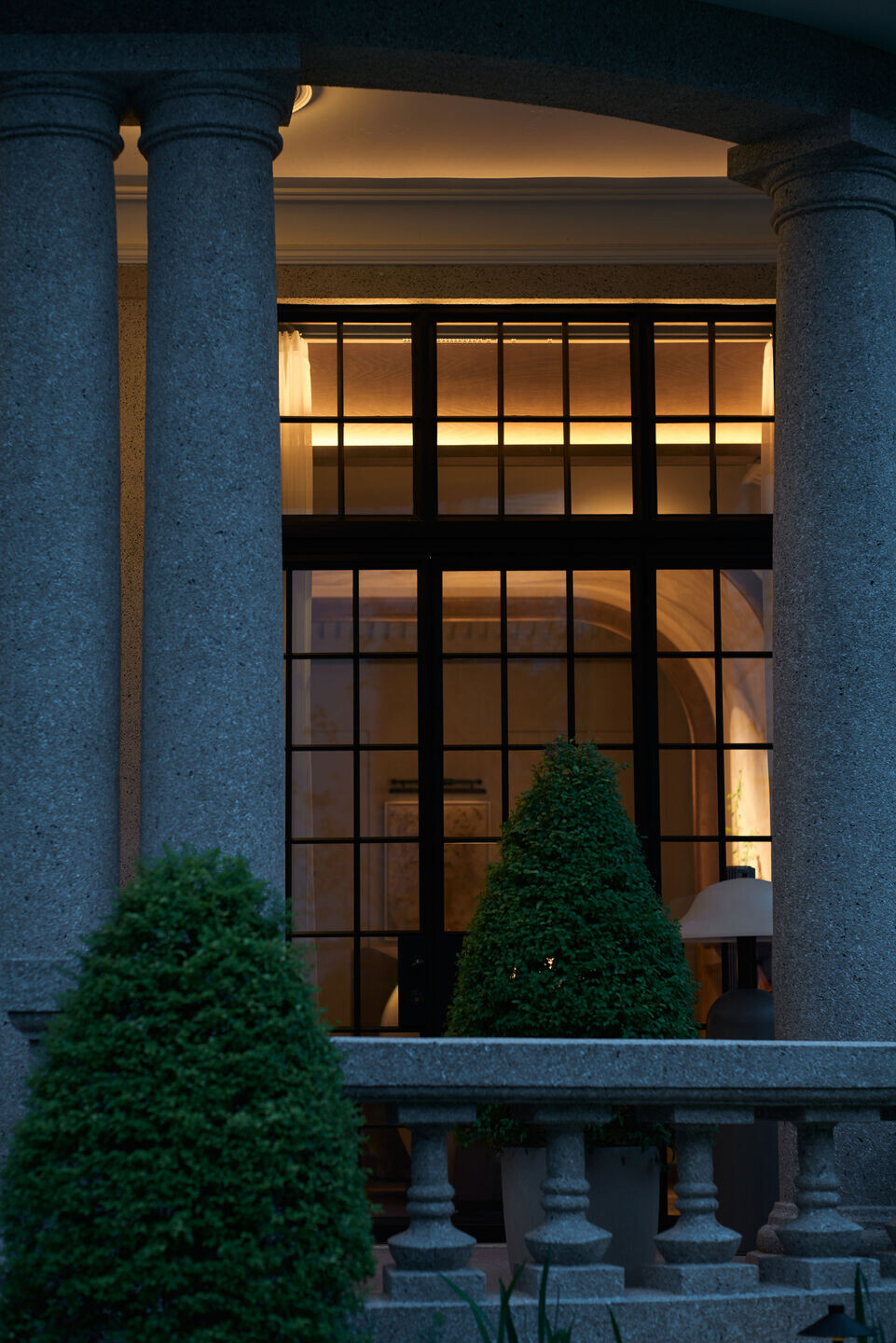

Material Used:
1. Material: Wood, Paint, Stoned, Metal, Tile, Leather, Wallpaper, Resin
2. Furnishing brands: Objective Gallery (OBJ +), Finn Juhl, BD Barcelona Design, Fogia
